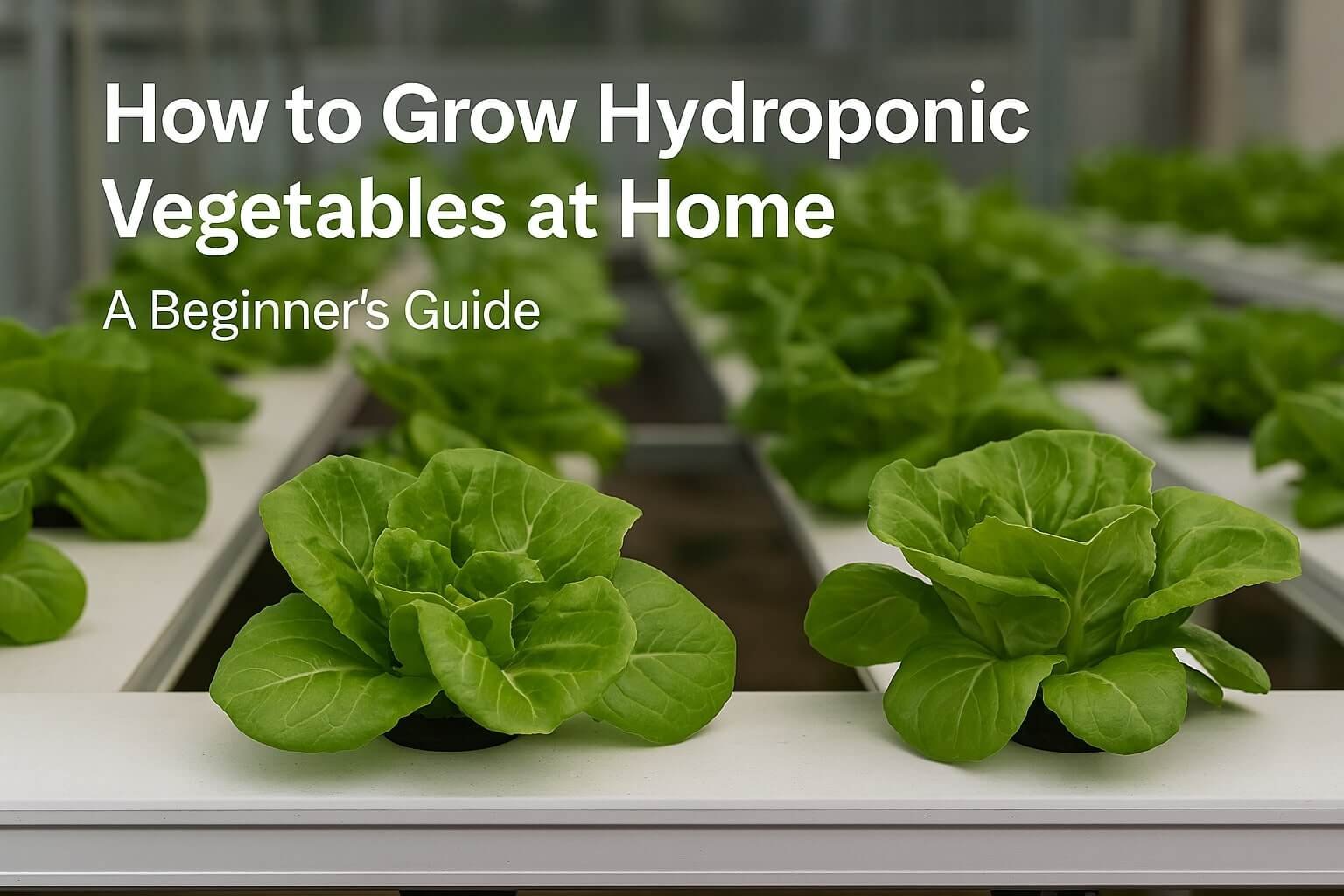A Beginner’s Guide
Hydroponic gardening is revolutionizing the way we grow food—especially for urban dwellers and eco-conscious families. Whether you’re short on space or simply want fresh produce year-round, learning how to grow hydroponic vegetables at home is a game-changer. This guide walks you through everything from setup to harvest, with practical tips for beginners and seasoned gardeners alike.
🧠 What Is Hydroponics?
Hydroponics is a soil-free method of growing plants using nutrient-rich water. Instead of relying on traditional soil, plants absorb nutrients directly from the water, resulting in faster growth, higher yields, and fewer pests.
Benefits of Hydroponic Gardening:
- 🚫 No soil required
- 💧 Uses up to 90% less water than traditional gardening
- 🌿 Faster plant growth and higher yields
- 🪴 Ideal for small spaces and indoor setups
- 🐛 Reduced risk of soil-borne pests and diseases
🏡 Setting Up Your Home Hydroponic System
You don’t need a greenhouse or fancy equipment to get started. Here’s a breakdown of what you’ll need:
🔧 Essential Equipment:
- Growing containers (buckets, trays, or PVC pipes)
- Water reservoir with a pump
- Net pots to hold plants
- Growing medium (rockwool, clay pellets, or coco coir)
- LED grow lights (for indoor setups)
- Air pump and air stones (for oxygenation)
- Hydroponic nutrients (pre-mixed or DIY solutions)
- pH meter to monitor water acidity
🛠️ Popular Hydroponic Systems:
| System Type | Best For | Complexity | Notes |
|---|---|---|---|
| Deep Water Culture | Leafy greens | Easy | Great for beginners |
| Nutrient Film Technique | Herbs & lettuce | Moderate | Requires constant water flow |
| Ebb & Flow | Tomatoes, peppers | Moderate | Uses timed flooding cycles |
| Wick System | Small herbs | Very Easy | No electricity needed |
| Drip System | Mixed vegetables | Advanced | Precise nutrient delivery |
🌿 Choosing Vegetables for Hydroponics
Start with fast-growing, low-maintenance crops. These are ideal for beginners and offer quick rewards.
🥬 Best Vegetables to Grow:
- Lettuce
- Spinach
- Kale
- Basil
- Mint
- Tomatoes
- Cucumbers
- Peppers
🧪 Mixing Nutrients & Monitoring pH
Hydroponic plants rely entirely on the nutrient solution. You’ll need to:
- Use a balanced hydroponic fertilizer with nitrogen, phosphorus, potassium, calcium, magnesium, and trace minerals.
- Maintain a pH level between 5.5 and 6.5 for optimal nutrient absorption.
- Change the nutrient solution every 1–2 weeks to prevent buildup and root damage.
💡 Lighting & Temperature Tips
If you’re growing indoors, lighting is crucial. Use full-spectrum LED grow lights and keep them on for 12–16 hours per day. Maintain room temperature between 65–75°F (18–24°C) and ensure good air circulation.
🧼 Maintenance & Troubleshooting
Hydroponic systems are low-maintenance but require regular checks:
- Clean the system monthly to prevent algae and bacteria.
- Watch for root discoloration (brown roots = trouble).
- Check water levels and nutrient concentration weekly.
- Use neem oil or insecticidal soap for pest control if needed.
🧺 Harvesting Your Hydroponic Vegetables
Most leafy greens are ready to harvest in 3–4 weeks. Fruiting vegetables like tomatoes may take 6–8 weeks. Use clean scissors to snip leaves or fruits, and avoid damaging the roots.
🌍 Eco-Friendly Tips
Want to make your hydroponic garden more sustainable?
- Use organic nutrients or compost tea.
- Recycle water using a closed-loop system.
- Choose biodegradable growing mediums like coco coir.
- Use solar-powered pumps or LED lights.
❓ Frequently Asked Questions (FAQs)
Q1: Can I grow hydroponic vegetables without sunlight?
Yes. You can use LED grow lights to simulate sunlight indoors.
Q2: How much does a basic hydroponic setup cost?
A DIY system can cost as little as $50–$100, depending on size and materials.
Q3: Are hydroponic vegetables safe to eat?
Absolutely. They’re often cleaner and pesticide-free compared to soil-grown produce.
Q4: What’s the easiest vegetable to grow hydroponically?
Lettuce and basil are beginner-friendly and grow quickly.
Q5: How often should I change the nutrient solution?
Every 1–2 weeks, or when pH and EC levels fluctuate.





